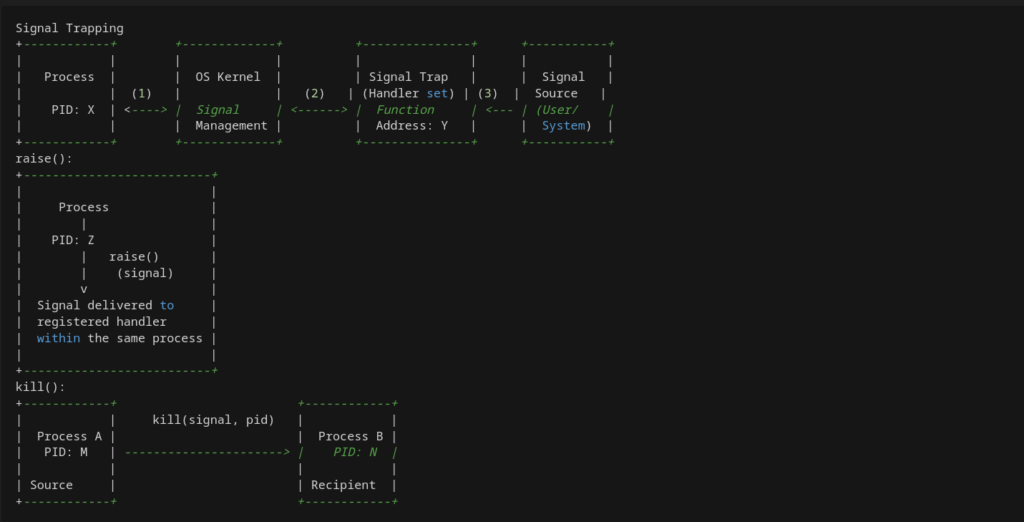// by Anamika
The harmonious concert of operations within an operating system is often marred by miscommunications and lags. How do processes within this intricate system speak to each other? Signals, an age-old mechanism in the annals of Unix-like systems, offer a solution. Let’s decode the mysteries of signals and their pivotal role in IPC. 🔍📡
1. What’s in a Signal? The Basics Deciphered 📜🕊️
In the tapestry of operating systems, especially those inspired by Unix, signals aren’t merely abstract concepts. Rather, they’re event-driven notifications or interrupts that dictate processes to undertake a certain action. To draw an analogy, they’re akin to our system’s natural reflexes—like flinching away from extreme heat. Renowned signals like SIGTERM, SIGKILL, and SIGINT stand as testaments to this mechanism. 🔔✅
2. Signals as the Chosen Tool for IPC: Delving Deeper 🚀🔍
Why signals, you ask? Here’s why:
- Optimal Efficiency: Embedded within the kernel’s domain, signals outmaneuver the latency that can tarnish user-level IPC. A true embodiment of speed and efficiency! ⚡️🛤️
- Straightforwardness Galore: Between the
killandsignalsystem calls, the blueprint to deploy and receive signals stands clear and uncomplicated.
But, it’s not always smooth sailing:
- Limitation on Payloads: Signals, though adept messengers, come without an actual message body. Their role? Announcing an event. 📣❗
- Ordering Challenges: A barrage of signals can lead to unpredictability in delivery sequencing—a potential challenge for order-centric operations. 🧩🔄
3. Sculpting IPC Through Signals: Unraveling Use Cases 📖🎨
Envision a primary process, keen on halting the tasks of its descendant processes until a particular resource is set and ready:
- The main process dispatches the
SIGSTOPsignal, momentarily suspending the child processes. - Once the resource is prepped, the
SIGCONTsignal makes its debut, rejuvenating the once paused processes.
And what when a child process calls it a day? The parent turns to the SIGCHLD signal, which communicates the termination.
Craving an in-depth look? Navigate to my GitHub repository: GITHUB_REPO. Dive deep into the code, witness real-world examples, and immerse yourself in a world of technical wizardry! 📚💡
4. Signals: The Beginning, Not the End 🌌📌
Signals, despite their foundational role, represent just the tip of the IPC iceberg. The realm is enriched with shared memory segments, message queues, and the dynamic world of sockets, each adding its flavor to IPC. But, starting with signals lights up the pathway, introducing one to the more nuanced avenues of IPC. 🌟🛰️
Parting Thoughts 🖋️🎇
Navigating the intricate labyrinths of IPC requires understanding, practice, and a dash of curiosity. Signals, entrenched in their timeless wisdom, serve as the perfect guide. For all the tech aficionados out there, here’s your golden key to architecting responsive, agile, and efficient systems. Let’s push boundaries and #ContinuouslyLearningWithAnamika! 💡🌍

